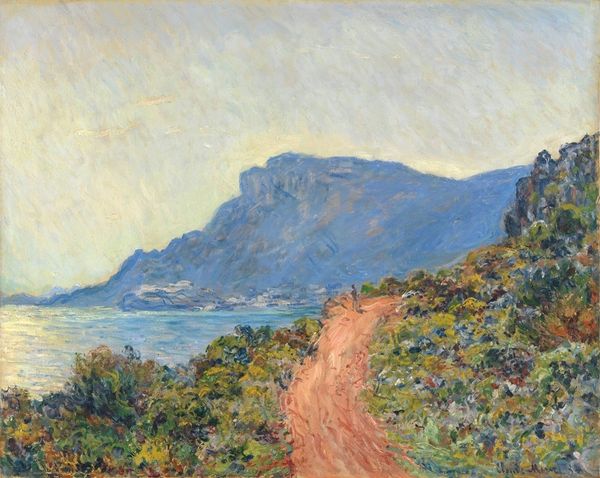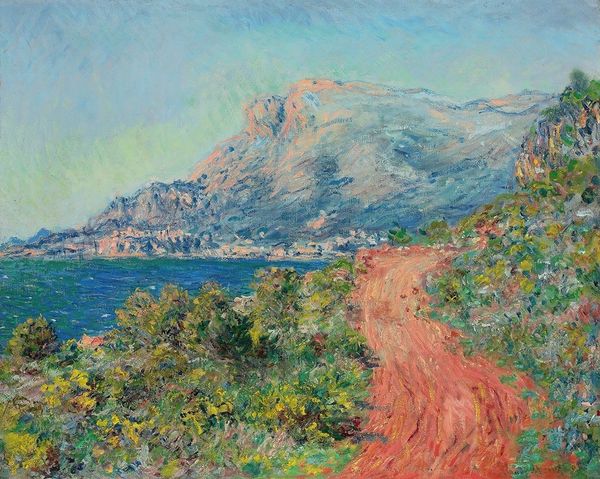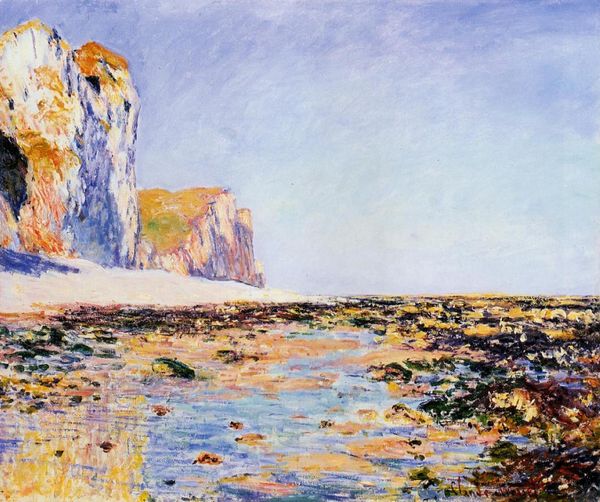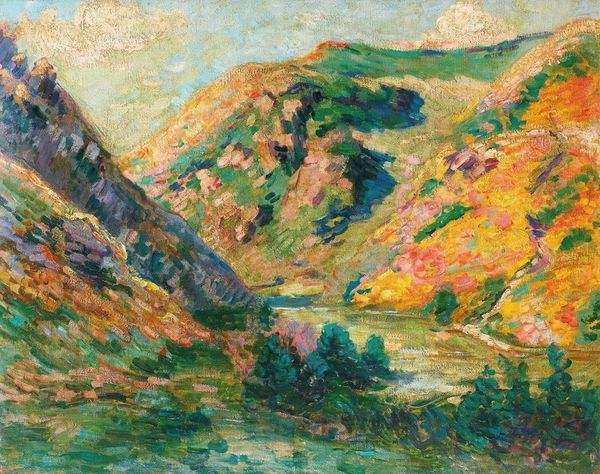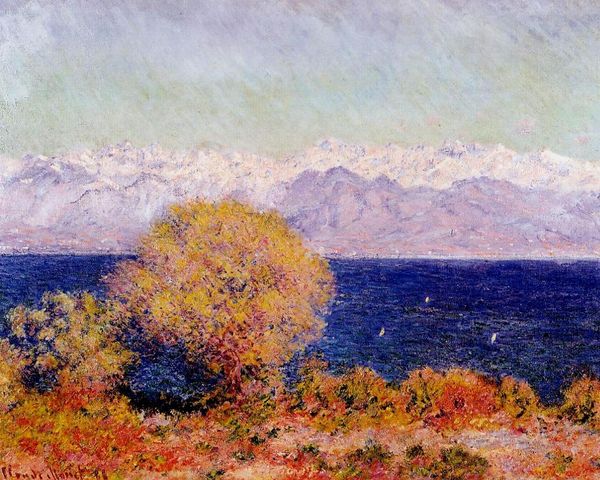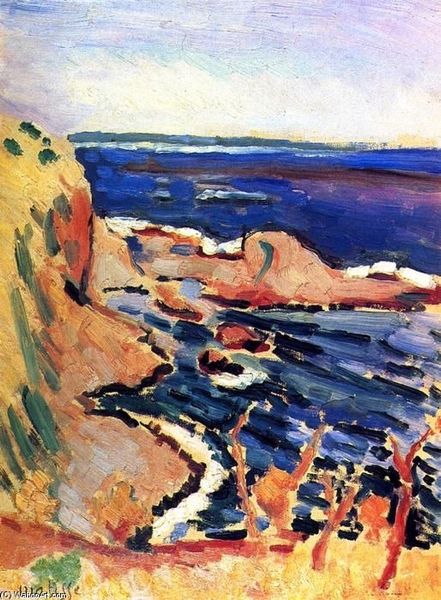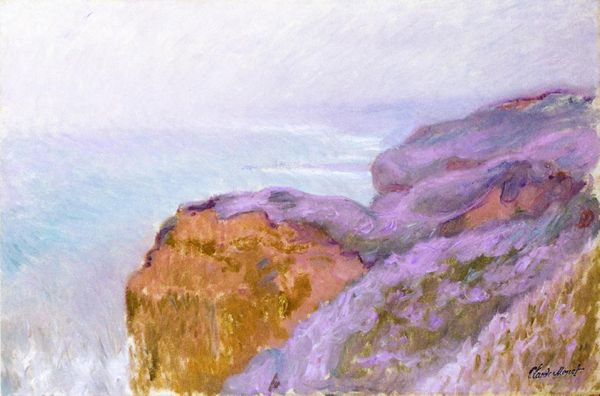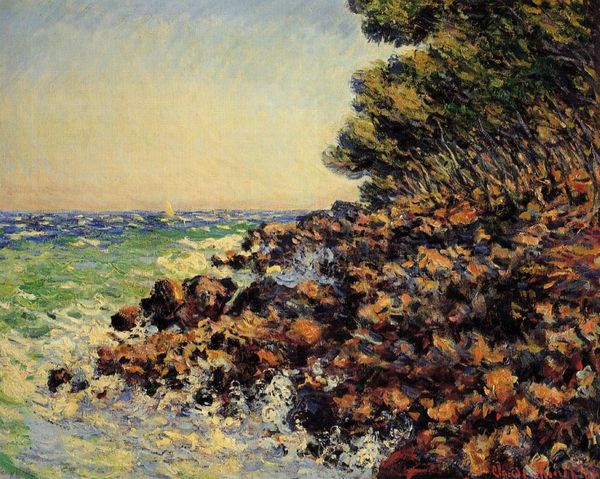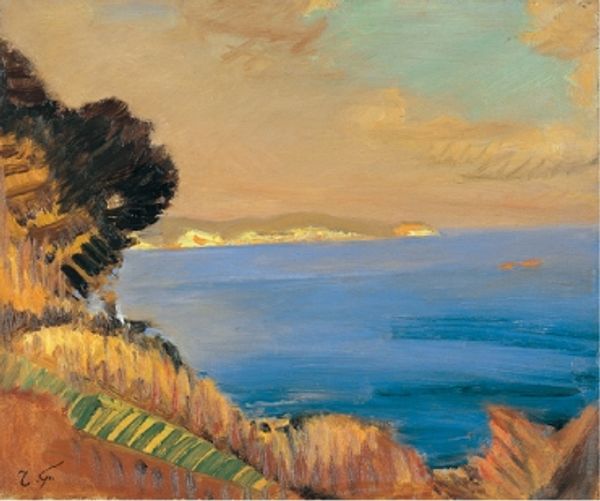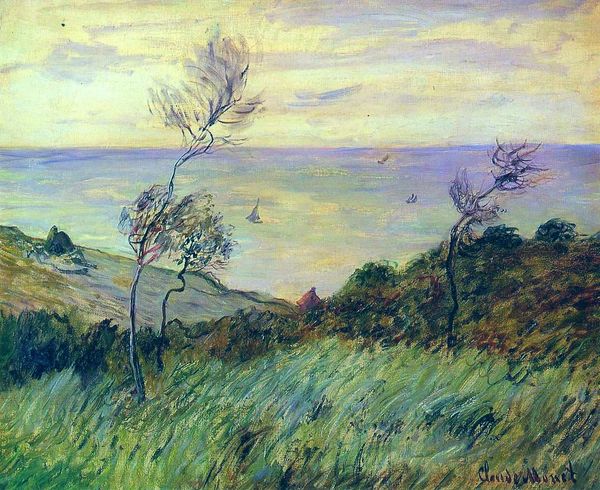
Copyright: Public domain
Curator: Standing before us is Claude Monet’s "The Red Road at Cap Martin, near Menton," painted in 1884. It’s an oil on canvas, depicting a vibrant landscape on the French Riviera. Editor: It's striking! The warmth of the red road and foliage in the foreground is quite the contrast to the cool blues and grays of the distant mountain and sea. I sense an immediate push and pull in its color relationships. Curator: Monet's time in the south of France significantly influenced his art. He, along with other artists, were drawn to the region’s light and the new perspectives it offered. They shaped new movements. This landscape, bathed in Mediterranean light, is a clear example of that shift. Editor: Precisely. Observe how light seems to dissolve the forms. Look at the brushstrokes – broken and separate, yet they coalesce into recognizable shapes. The materiality of the paint itself is a key part of the viewing experience, rather than any attempt to recreate an exact record. Curator: He exhibited paintings from his trip shortly after returning, solidifying his status and bringing some southern sun to the Parisian art world. Consider, though, the political climate of the time; France was solidifying its colonial grip on other regions. So while Monet escaped Paris to be enraptured by nature, this image might inadvertently speak to ideas about French expansion and the exotic allure of the Mediterranean landscape to city dwellers back home. Editor: I agree. The way Monet juxtaposes colors is dazzling, too. That jolt of orange against the blue is thrilling! He transforms nature through the act of painting into something visually arresting that pulls at you, all within a well-balanced composition. Curator: His style wasn't embraced by all, though. He and his fellow Impressionists challenged the established academic painting traditions, facing some social and critical rejection early on before gaining traction in cultural perception. Editor: Absolutely. "The Red Road at Cap Martin" is not just a picture, it’s an orchestration of visual sensation – the culmination of a specific way of seeing. Curator: Exploring this, it’s apparent how even a landscape can echo both artistic revolutions and broader societal narratives, giving us a sense of the man, the moment, and its unfolding legacy. Editor: And ultimately, the work encapsulates a deep connection to color, light, and the raw sensation of being present within such a landscape, a celebration that transcends time.
Comments
No comments
Be the first to comment and join the conversation on the ultimate creative platform.
